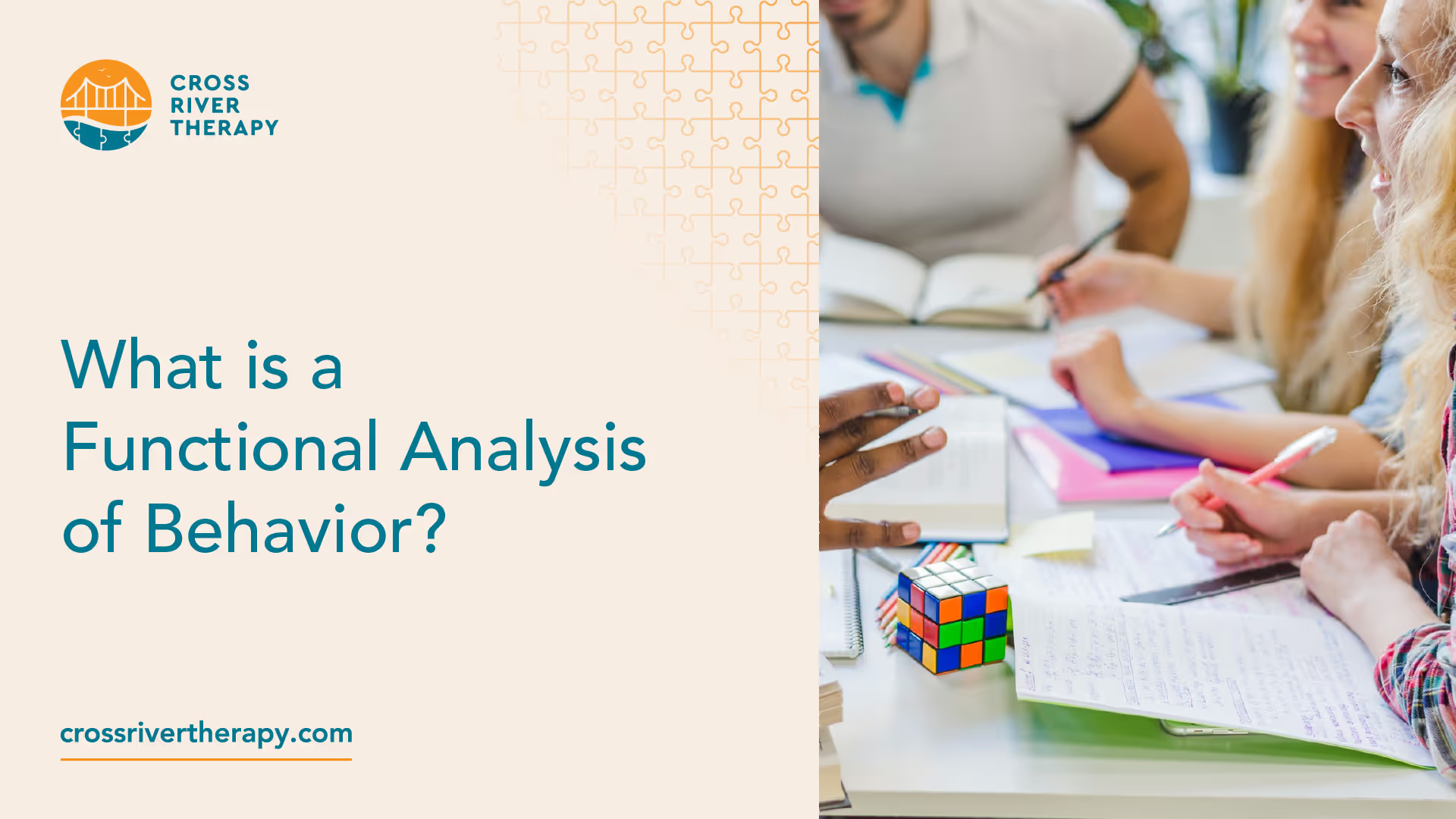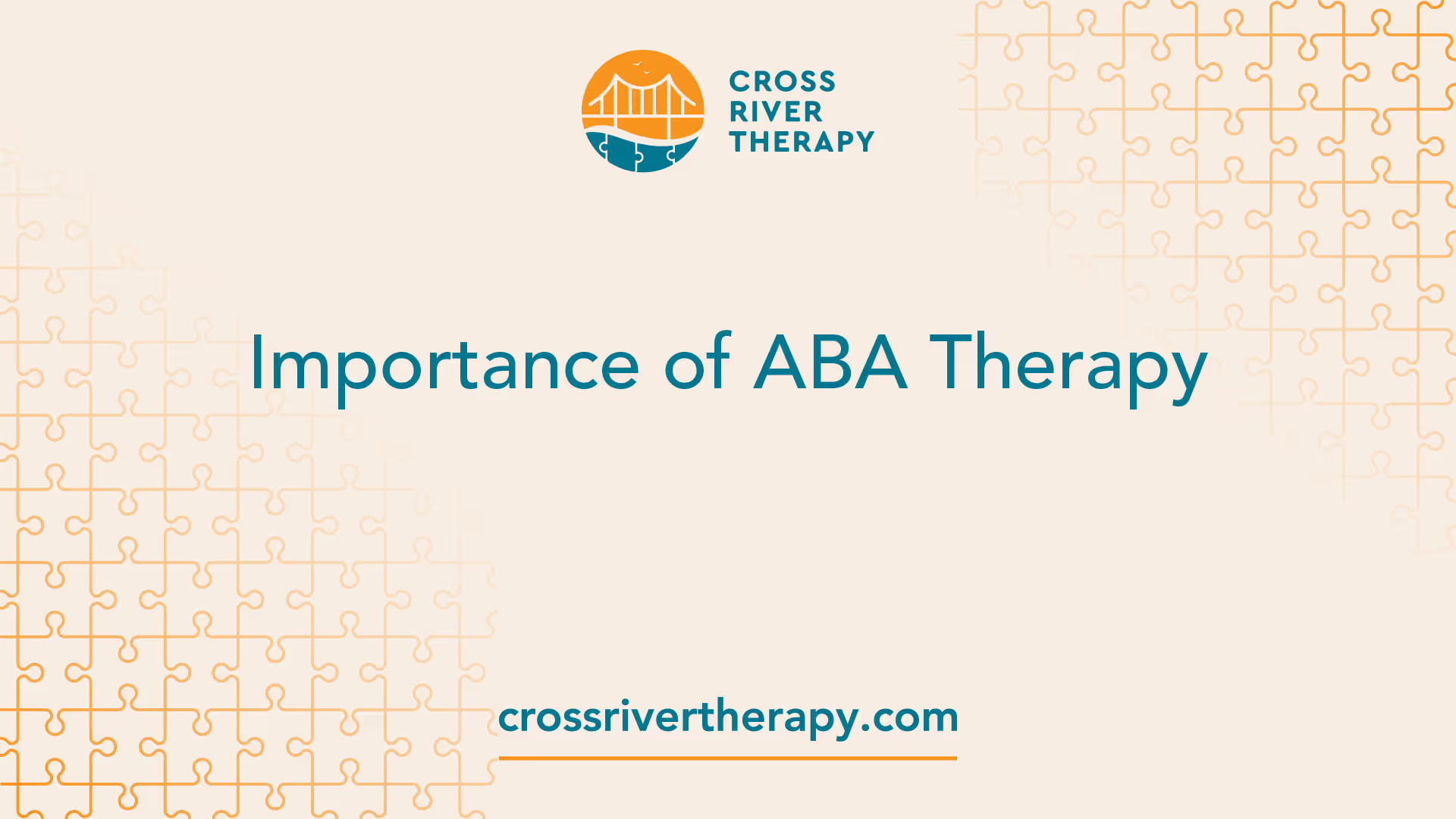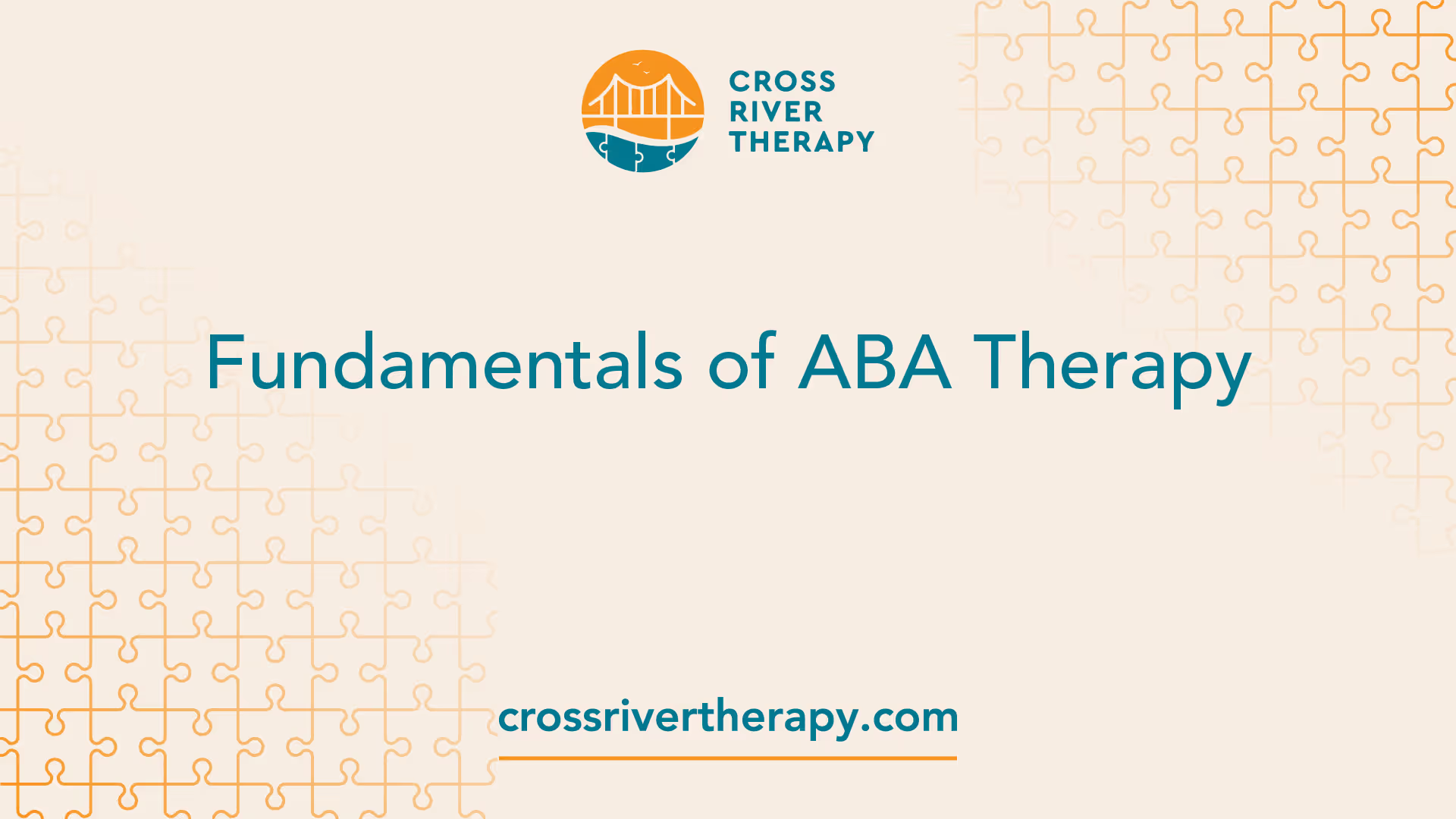What is a Functional Analysis of Behavior?
Discover what functional analysis of behavior is and how it can transform autism therapy outcomes.
Understanding Behavior Analysis
Behavior analysis, a discipline distinct from psychology, plays a pivotal role in Applied Behavior Analysis (ABA) therapy. To fully grasp the concept of behavior analysis in ABA, it's essential to understand its underlying principles and applications.

Principles of Behavior Analysis
The foundation of behavior analysis rests on the understanding that changes in the environment relate to the occurrence or non-occurrence of behavior in the future. This is achieved by analyzing functional relations between behavior and its consequences using the Operant Learning Paradigm, commonly known as the ABC's (Antecedent-Behavior-Consequence) or the more technically correct version, the Stimulus-Response-Consequence (SRC) paradigm.
Behavior analysts assert that antecedents and antecedent conditions "set the occasion" for behavior to occur, rather than causing the behavior. A behavior that is learned and continues to occur over time is the behavior that results in reinforcing consequences or the behavior that enables the learner to escape or avoid non-preferred consequences.
For example, a radar gun doesn't directly cause a driver to hit the brakes. Instead, it signals the availability of reinforcement (avoiding a ticket) if a certain behavior (slowing down) is performed. The driver's behavior is learned and continues to occur because it has been reinforced by the consequence of avoiding a non-preferred outcome.
Applications of Behavior Analysis
Behavior analysis is rooted in behaviorism and focuses on behavior change to improve the human condition through education and behavioral health treatment. It is the science of behavior, with numerous studies conducted by behavior analysts to identify the laws of behavior. These studies emphasize that behavior is a product of its circumstances, especially the events that immediately follow the behavior.
In ABA therapy, behavior analysis is used to understand why a person behaves in a certain way in response to specific environmental conditions or stimuli. This understanding is used to develop strategies and interventions that encourage positive behaviors and discourage negative or harmful ones.
Behavior analysis is a critical component of functional behavior analysis and is used extensively in the assessment and treatment of individuals with Autism Spectrum Disorder (ASD). By understanding 'what is behavior analysis in aba?', families and individuals can better navigate and benefit from ABA therapy.
In the following sections, we will delve deeper into the role of behavior analysis in ABA therapy, its techniques, and strategies, and how it's applied particularly in the context of Autism Spectrum Disorder (ASD) treatment.
Importance of ABA Therapy
Applied Behavior Analysis (ABA) therapy plays a significant role in the treatment and support of individuals with autism. Understanding 'what is behavior analysis in ABA?' is essential to grasp the effectiveness and importance of this therapeutic approach.

Early Intervention Benefits
ABA therapy is most effective when started as early as possible, preferably before the age of four. Early intervention using ABA has been shown to significantly enhance children's development, improving their social and communication skills, and making it easier for them to interact with other children.
By focusing on the principles of behavior analysis, ABA therapy aims to increase desired behaviors, teach social and behavioral skills, develop socially significant behaviors, and reduce inappropriate behavior in individuals with autism spectrum disorder [4].
More than 20 studies have established ABA as an evidence-based best practice treatment, demonstrating gains in intellectual functioning, language development, daily living skills, and social functioning. For a deeper understanding of this approach, refer to our article on functional behavior analysis.
Role of a BCBA
At the core of a successful ABA therapy program is a Board Certified Behavior Analyst (BCBA). A BCBA is a trained professional specializing in behavior analysis. They work to assess, analyze, and provide interventions for individuals to address behavioral issues and promote positive behavior changes [3].
A BCBA designs and oversees ABA programs, customizing them to each learner's skills, needs, interests, preferences, and family situation. This process involves conducting a detailed assessment to write specific treatment goals based on the individual's age and ability level.
The role of a BCBA is crucial in identifying and addressing specific behavioral challenges, and their expertise is instrumental in achieving positive outcomes in ABA therapy. For more information on the role of a BCBA, you can refer to our article on what is functional behavior assessment in ABA?.
In conclusion, the importance of ABA therapy and the role of a BCBA in this approach is undeniable. With early intervention and professional guidance, individuals with autism can make significant strides in their development and social interaction.
Fundamentals of ABA Therapy
At the core of ABA therapy is the understanding and enhancement of behavior using principles from the science of behavior. The focus is on creating socially significant changes, which is why the term "applied" is used.

Behavior Analysis in ABA
The question often arises, 'what is behavior analysis in ABA?' Behavior, in the context of ABA, refers to anything a person does. This includes both positive and negative actions that are measurable and observable. Examples of behaviors in ABA could be greeting a peer, performing a math problem, or asking a question [6].
The analysis part of behavior analysis in ABA involves establishing reliable relationships between interventions and behavior. This is achieved through clear definitions of behavior and the systematic delivery of interventions. Data collection and analysis are crucial components of this process as they help determine behavior changes, rates of change, and inform objective decisions about future interventions. For more on this, see our article on functional behavior analysis.
ABA Techniques and Strategies
ABA therapy uses a range of techniques and strategies to understand behavior better and bring about desired changes. It aims to alter challenging behaviors over time into more functional and "appropriate" behaviors [3].
The principles of ABA therapy involve breaking down behaviors and applying techniques like reinforcement to target and improve behavior. This approach is widely used in education, therapy, and behavioral intervention for its effectiveness.
These strategies and techniques are not one-size-fits-all. They are tailored to the individual's needs, taking into account their unique behaviors, skills, and challenges. This customization is a key aspect of ABA therapy and contributes to its effectiveness. You can learn more about these techniques in our articles on what is functional behavior assessment in aba? and what is functional analysis of behavior?.
In conclusion, understanding the fundamentals of ABA therapy, including behavior analysis and the various techniques used, is essential for families and individuals dealing with autism. As research continues to evolve in this field, so too will the strategies and techniques used in ABA therapy, continually improving the support available to those who need it.
Behavioral Principles in ABA
The cornerstone of Applied Behavior Analysis (ABA) therapy involves understanding and applying behavioral principles to bring about meaningful and positive changes. This includes a thorough analysis of the behavior, followed by strategic interventions, and meticulous data collection to evaluate the progress.
Analysis and Interventions
At the heart of behavior analysis in ABA, is establishing reliable relationships between interventions and behavior through clear definitions of behavior and systematic delivery of interventions. The aim is to understand how behavior works in real situations, with the goal of increasing helpful behaviors and decreasing harmful behaviors or those that affect learning [5].
A foundational principle is that antecedents and antecedent conditions "set the occasion" for behavior to occur, rather than causing the behavior. Essentially, behavior that is learned and continues to occur over time is the behavior that results in reinforcing consequences, or the behavior that enables the learner to escape or avoid non-preferred consequences [1].
Interventions in ABA often involve strategies like positive reinforcement, where a behavior followed by a valued reward increases the likelihood of that behavior being repeated. Rewards can include praise, toys, books, watching videos, and access to playgrounds. For understanding more about the functional analysis of behavior, one can refer to what is functional analysis of behavior?.
Data Collection and Analysis
Data collection and analysis are integral components of ABA therapy. They provide an objective means to determine if behaviors are changing, increasing, or decreasing, allowing for informed decisions about future interventions.
Another therapeutic technique in ABA is 'extinction'. Aimed at reducing or eliminating challenging behaviors, it involves ceasing to provide any form of reinforcement for the targeted behavior. This method operates on the principle of removing reinforcements, essentially ignoring the challenging behavior to make it gradually disappear over time.
In conclusion, the behavioral principles in ABA are not just theoretical concepts but practical tools that can bring about significant improvements in the behavior and quality of life of individuals with autism and related developmental disorders.
ABA Therapy for Autism
Applied Behavior Analysis (ABA) therapy has proven to be an effective intervention for individuals with Autism Spectrum Disorder (ASD). This section explores how ABA is applied to ASD and how programs are customized to meet individual needs.
ABA for Autism Spectrum Disorder
ABA therapy aims to increase desired behaviors, teach social and behavioral skills, develop socially significant behaviors, and reduce inappropriate behavior in individuals with autism spectrum disorder. It's considered an evidence-based best practice treatment by the US Surgeon General and the American Psychological Association, with more than 20 studies showing that intensive and long-term therapy using ABA principles can improve outcomes for many children with autism.
The therapy involves teaching appropriate responses to individuals with ASD using five key methods, including one technique known as positive reinforcement [8]. This approach helps individuals with ASD to respond to stimuli and situations in more socially appropriate ways.
To understand more about the principles of ABA, refer to our articles on functional behavior analysis and what is functional behavior assessment in aba?.
ABA Programs and Customization
ABA programs for Autism Spectrum Disorder are tailored to meet individual learners' needs. The primary focus is on promoting independence and success in both the short and long term. Each program is customized based on the individual's skills, needs, interests, preferences, and family situation.
Customization of ABA programs ensures that each individual receives the most effective treatment possible. It allows for flexibility and adaptability, ensuring that the strategies used are most beneficial to the individual's unique circumstances.
ABA therapy is a dynamic process that adjusts and evolves over time as the individual progresses. Continuous monitoring and assessment are integral to ensuring the effectiveness of the program and making necessary adjustments.
To learn more about the function of ABA and how it can be used to address specific behaviors, see our articles on what is functional analysis of behavior? and what is function aba?.
Impact and Effectiveness of ABA
When considering the effectiveness and impact of Applied Behavior Analysis (ABA) therapy, it's important to highlight that ABA is not only a scientifically validated approach but also brings about significant changes in the lives of individuals who undergo the therapy.
Evidence-Based Practice
ABA is considered an evidence-based best practice treatment by the US Surgeon General and the American Psychological Association. This indicates that ABA therapy, which includes functional behavior analysis, is backed by rigorous empirical research and has proven effective in various areas [5].
More than 20 studies have demonstrated that intensive and long-term therapy using ABA principles can lead to substantial improvements for many children with autism. These improvements span various domains such as intellectual functioning, language development, daily living skills, and social functioning. This evidence underscores the success of behavior analysis in significantly improving lives [2].
Success Stories and Outcomes
ABA is primarily known for its success with individuals with autism, especially children. However, its versatility extends beyond this application. It is used in educational settings, therapy sessions for developmental disabilities, and even in organizational behavior management (OBM) to assist companies in refining their operations for better performance.
Behavior analysis, a key component of ABA, helps us understand how behavior works in real situations. The aim is to increase helpful behaviors and decrease harmful behaviors or those that affect learning. ABA therapy, which has been used to help children with autism and related developmental disorders since the 1960s, has had numerous success stories.
As demonstrated, the impact of ABA and behavior analysis is substantial, with success stories spanning multiple decades and contexts. This evidence-based approach is effective in bringing about positive changes in the lives of individuals with autism and other developmental disorders. To learn more about the methodologies used in ABA, refer to our articles on what is functional behavior assessment in aba? and what is functional analysis of behavior?.
References
[1]: https://childsplayplus.com/is-aba-a-part-of-psychology-or-a-separate-discipline/
[2]: https://www.bacb.com/about-behavior-analysis/
[3]: https://www.autismparentingmagazine.com/aba-principles/
[4]: https://blueabatherapy.com/aba/aba-therapy-examples/
[5]: https://www.autismspeaks.org/applied-behavior-analysis
[6]: https://vcuautismcenter.org/resources/factsheets/printView.cfm/982
[7]: https://gsep.pepperdine.edu/blog/posts/aba-techniques-strategies-for-behavior-analysts.htm
[8]: https://www.lumierechild.com/blog/5-aba-therapy-methods-and-how-theyre-applied-in-real-life/



